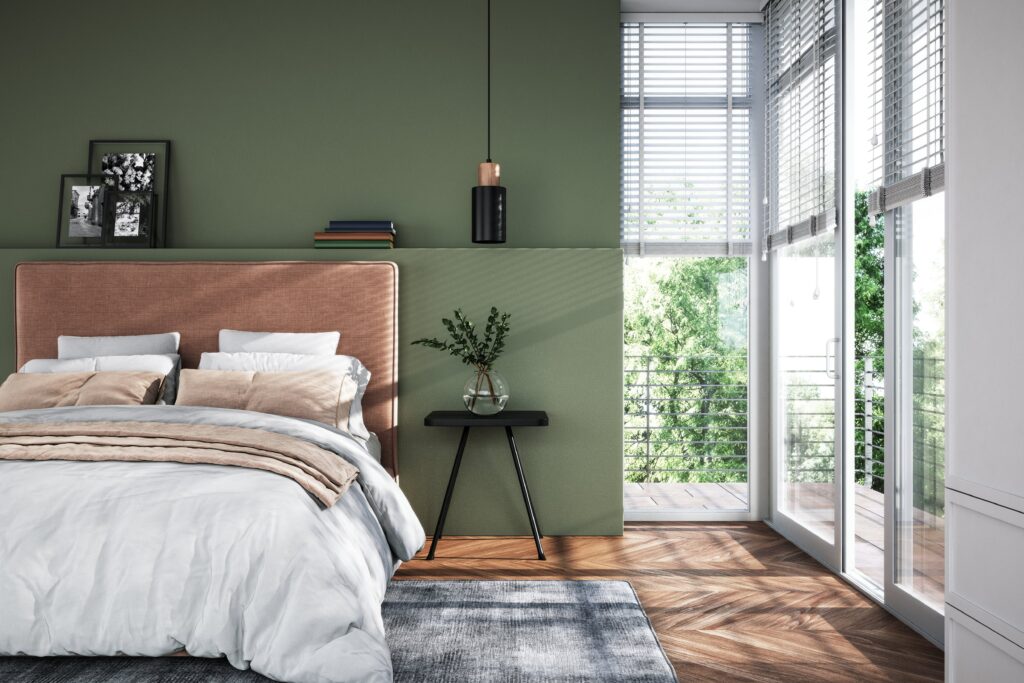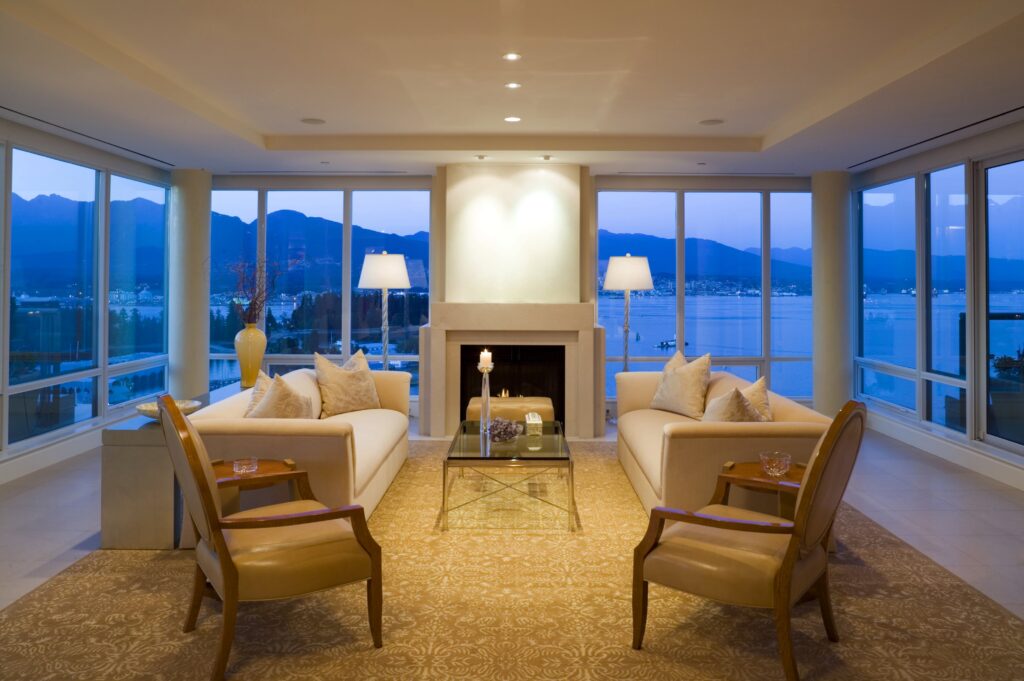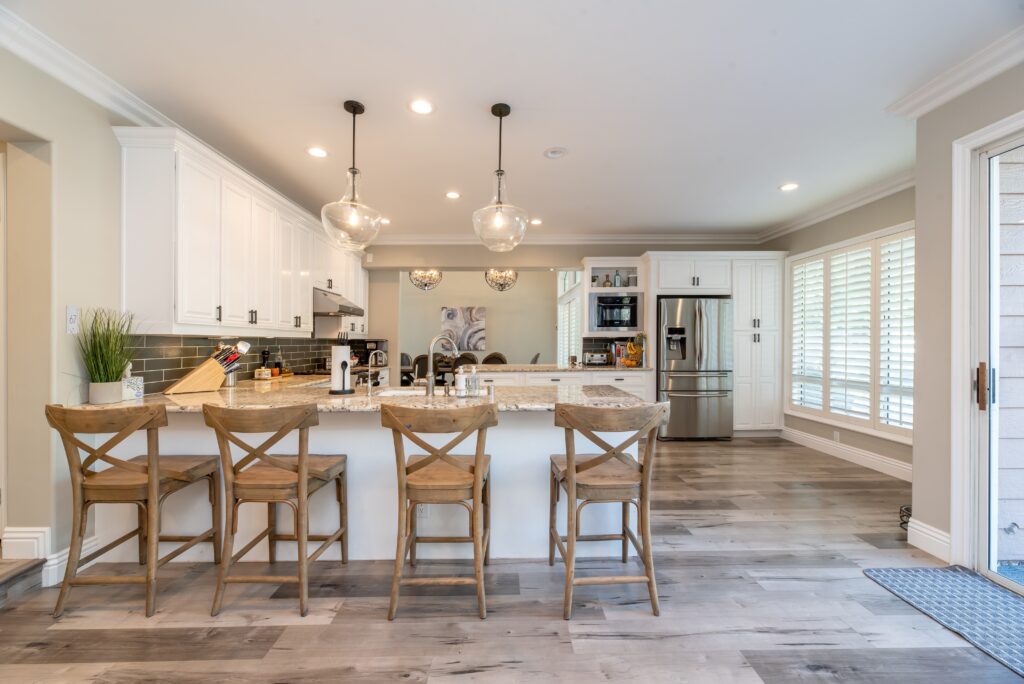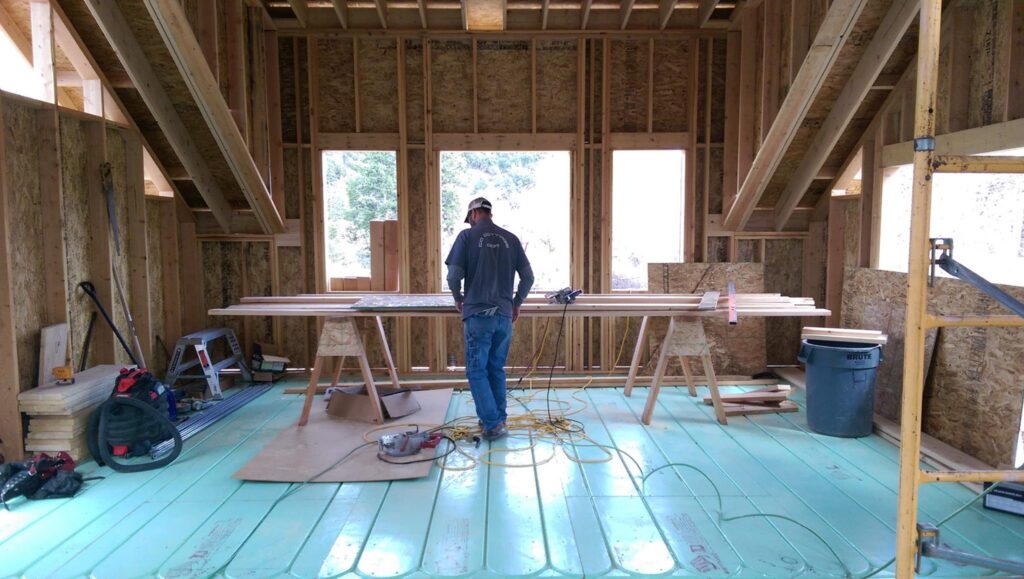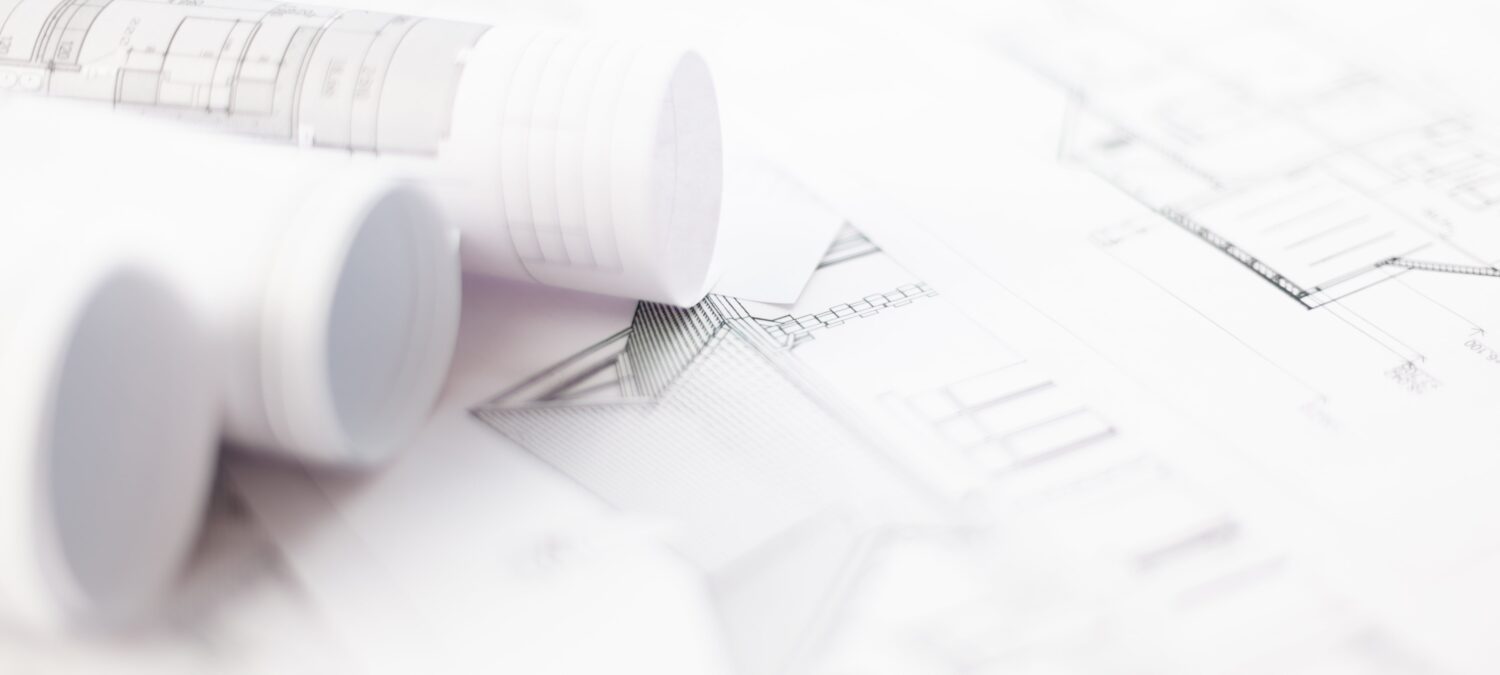Benefits of Radiant Floor Heating
It is estimated that 90% of homes in the United States are heated using forced air. We’re accustomed to noisy fans kicking on and off, being too hot upstairs and too cold downstairs, wrapping ourselves in extra layers only to strip them off a short time later, and constantly adjusting the thermostat to try and keep comfortable.
But imagine the alternative — exquisite warmth beneath every step. With in-floor radiant heat, there are no noisy fans blowing dust and allergens or drying out sinuses. The benefits of heated floors include completely silent heat, improved indoor air quality and a reduction in the spread of airborne illnesses and incidents of asthma. Cold floors are a thing of the past, and energy is not wasted heating air that just rises to the ceiling. Radiant floor heating uses “zoning” to control the temperature room-by-room, saving energy and maximizing comfort for every occupant. Warmboard radiant heat makes all this possible!
A typical radiant-heated home in the U.S. can expect a 25% energy savings over a conventional forced air home. This 25% savings can be attributed to several factors including parasitic losses, lower ceiling temperatures, the ability to zone the home and more. Because of its superior conductivity, Warmboard radiant infloor heat lowers water temperatures, which maximizes your boiler’s efficiency, saving you even more money every year for the life of your home.
Architects have complete liberty with design because there are no floor registers or wall or ceiling chases. Furniture can be placed anywhere without regard to registers, vents or wall radiators. And rooms with high, open ceilings and/or floor-to-ceiling windows can be heated simply and efficiently.



